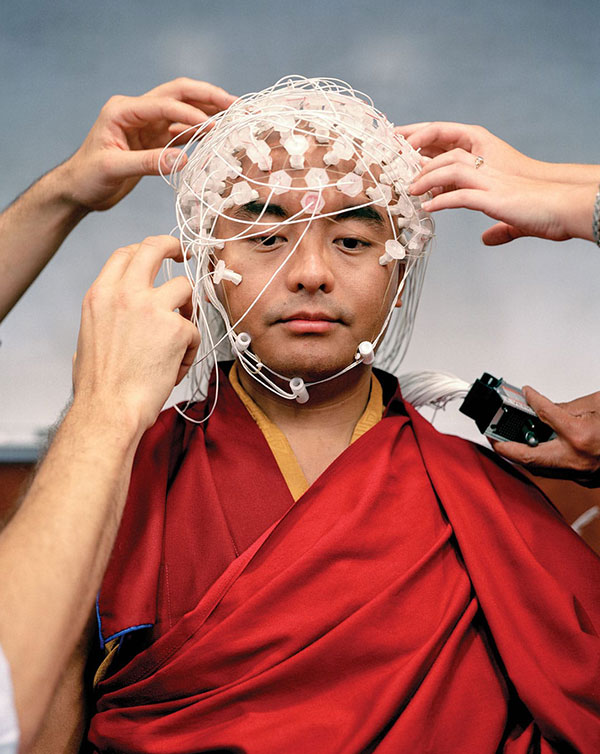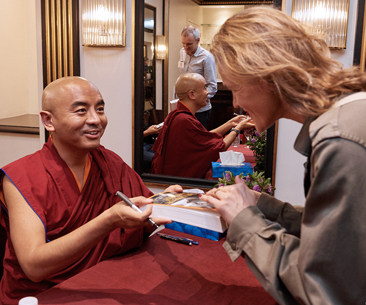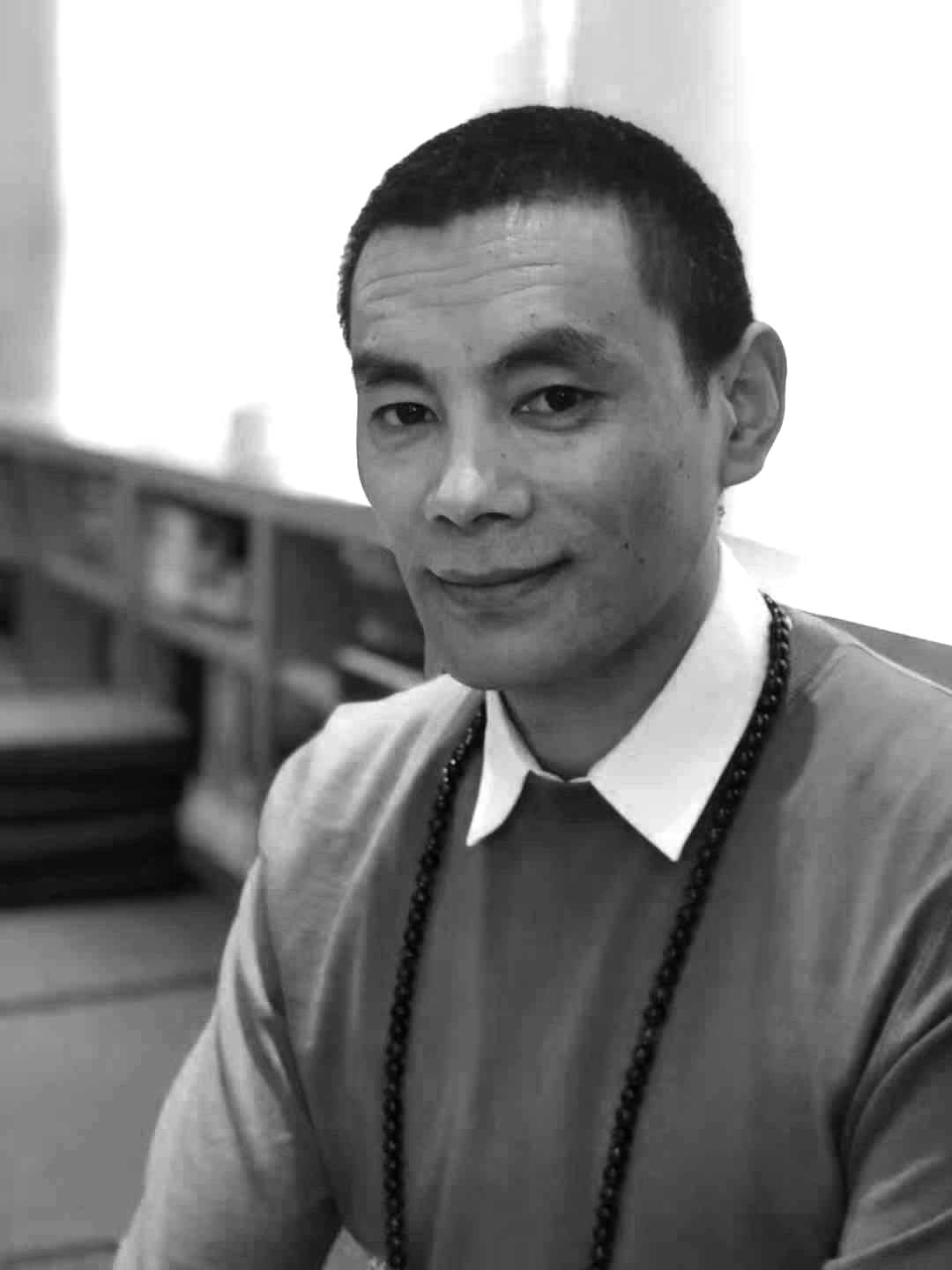Registration
Registration will close 1 hour in advance of the event. Full refunds will be given for cancellation requests up to 1 hour in advance of the event.
Who can attend this event?
There are prerequisites for attendance at this event.
Requirements for participation: To have attended Path of Liberation Levels 1, 2, 3, and 4 and completed the corresponding practice requirements AND to have received a White Tara empowerment from a lineage lama.
Translation
Translation from English will be offered in Chinese, French, German, Portuguese, Russian, and Spanish.
The deity’s body represents the indivisibility of emptiness and appearance; the mantra of each deity is the indivisibility of emptiness and sound; the deity’s mind is the indivisibility of emptiness and awareness. — The 3rd Jamgon Kongtrul Rinpoche
White Tara represents the enlightened qualities of all awakened beings. Connecting with these profound characteristics in her can help us unlock our own true nature and intrinsic qualities. During this program, Mingyur Rinpoche will introduce the White Tara practice and the profound methods that use the imagination as a tool for awakening. These practices will be based on the liturgy that Rinpoche composed — Radiance of the Heart.
WHY SHOULD I ATTEND?
Do you wish to go deeper on the Vajrayana path? Do you want to learn about using the imagination as a tool for awakening? During this retreat, Mingyur Rinpoche will teach us ways to connect more deeply with our true nature through the practice of White Tara. This practice has the potential to undermine our habitual view of ourselves and the world as impure, and instead open our minds to the world’s true beauty, as it is.
WHAT WILL I LEARN?
In this program, you will:
- deepen your understanding of the nature of mind
- learn techniques included in the White Tara practice
- explore the imagination as a tool for awakening
- learn core elements of development stage practice
- learn the practice of the White Tara liturgy, Radiance of the Heart
WHAT IS INCLUDED IN THIS PROGRAM?
- Live teachings, Q&A, and practice sessions with Mingyur Rinpoche
- Teaching sessions with Lama Trinley
- Q&A sessions with Tergar guides
- Group meditation
REQUIREMENTS FOR PARTICIPATION:
To have attended Path of Liberation Levels 1, 2, 3, and 4 and completed the corresponding practice requirements AND to have received a White Tara empowerment from a lineage lama.
The requirements for participation were set in consultation with Mingyur Rinpoche. In turn, we ask that you honor them. Thank you!
About Path of Liberation Level 5: Embodying Pure Awareness
Thank you for your interest
This event happened on November 1. If you attended this event, you can access your resources by logging in.
We invite you to take a look at more events with Mingyur Rinpoche and Tergar Instructors.
About Mingyur Rinpoche

In his approach to teaching meditation, Mingyur Rinpoche integrates traditional Buddhist practice and philosophy with the current scientific understanding of the mind and mental health – making the practice of meditation relevant and accessible to students around the world.
Mingyur Rinpoche is a world-renowned meditation teacher with personal experience of anxiety and panic attacks, which he suffered from throughout his childhood and into his teenage years, when he learned to transform his panic through meditation. Born in Nepal in 1975, Mingyur Rinpoche began to study meditation as a young boy with his father, Tulku Urgyen Rinpoche, himself a well-respected Buddhist teacher. As a child he became interested in contemporary science through conversations with scientists who were visiting his father, and as he grew older he began to collaborate with neuroscientists and psychologists, including Richard Davidson and Antoine Lutz at the University of Wisconsin, on research projects that study the effects of meditation on the brain and the mind.

Mingyur Rinpoche’s first book, The Joy of Living: Unlocking the Secret and Science of Happiness, debuted on the New York Times bestseller list and has been translated into over twenty languages. His second book, Joyful Wisdom: Embracing Change and Finding Freedom, explores how difficult emotions and challenging life situations can be used as stepping stones to discover joy and freedom. In his most recent book, In Love with the World, Mingyur Rinpoche shares how his meditation practice sustained him when he left his monastery to wander through India and the powerfully transformative insights he gained from the near-death experience he had at the beginning of his journey. Mingyur Rinpoche recently appeared in the Netflix series The Mind, Explained, in an episode about the benefits of mindfulness.
As the head of the Tergar Meditation Community, Mingyur Rinpoche supports groups of students in more than thirty countries, leading workshops around the world for new and returning students every year.
About Lama Trinley

Lama Trinley has been the resident teacher at the Tergar Mingjue Phoenix Center since November, 2007. Lama Trinley began his education at Tergar Monastery, where he studied the rituals, prayers, and other traditional practices of the Tibetan Buddhist tradition. He entered the traditional three-year retreat when he was seventeen years old, after which he spent six years training in the monastic college of Tergar Monastery, where he taught for three years as assistant professor. His command of English and his humble and gentle demeanor make him easily accessible to newcomers and experienced meditators alike.
 EN
EN





